A beautiful Hike to Drangajökull glacier in the Westfjords of Iceland

The memorial stone for Sigvaldi Kaldalóns - Drangajökull glacier in the distance
I have written several travel-blogs about the most interesting stops by Djúpvegur road nr. 61. Now, let's turn from road 61 and see what sights road 635 has to offer.
Road 635 is 40 km long one-way. I will take you to the church at the end of the road, and show you the beautiful hike to Drangajökull glacier, Iceland's northernmost glacier.
Kaldalón 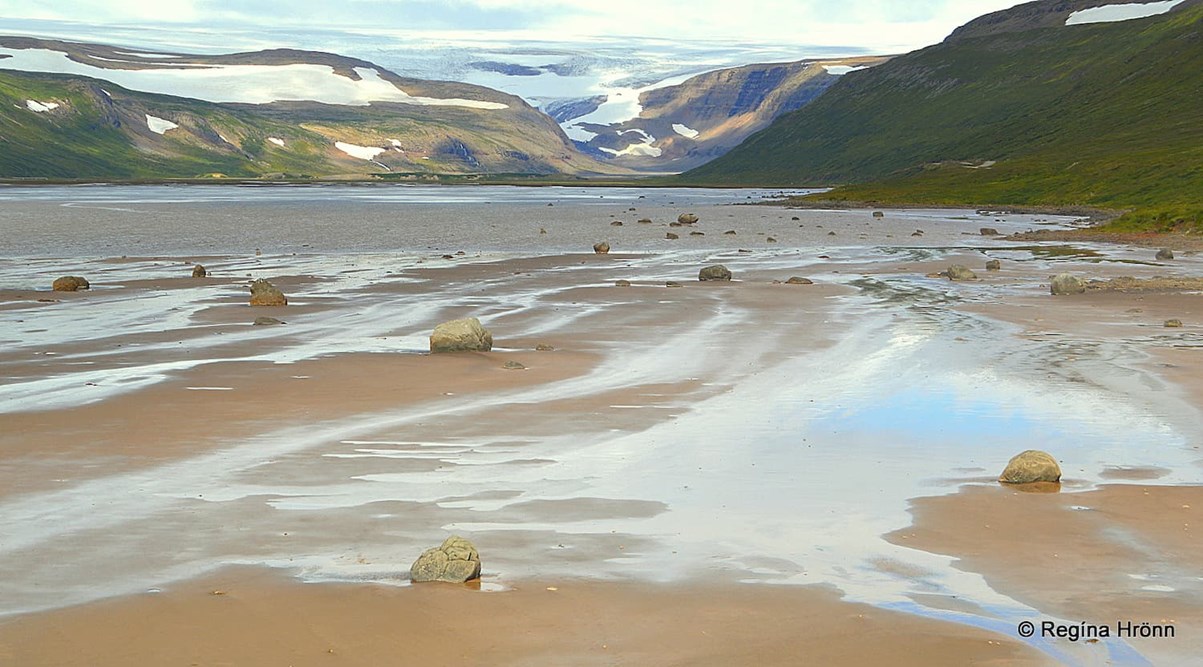
Kaldalón inlet
Kaldalón - the Cold Lagoon is a 5 km inlet leading to the Drangajökull glacier.
We will start by stopping by the memorial stone at Seleyri in Kaldalón and then do the hike to the glacier. I will then show you more stops by road 635 after the hike.
I was struck by the beauty and serenity of Kaldalón and the hike to Drangajökull glacier, and I have noticed that when people I know talk about Kaldalón they all say the same thing: "Það er svo fallegt þarna" - "The nature at Kaldalón is so beautiful" :)
The noted composer and medical doctor Sigvaldi Stefánsson was also struck by the beauty of Kaldalón and this area and took up the surname Kaldalóns - Sigvaldi Kaldalóns.
You can stop by his memorial stone and admire the view of the Kaldalón inlet.
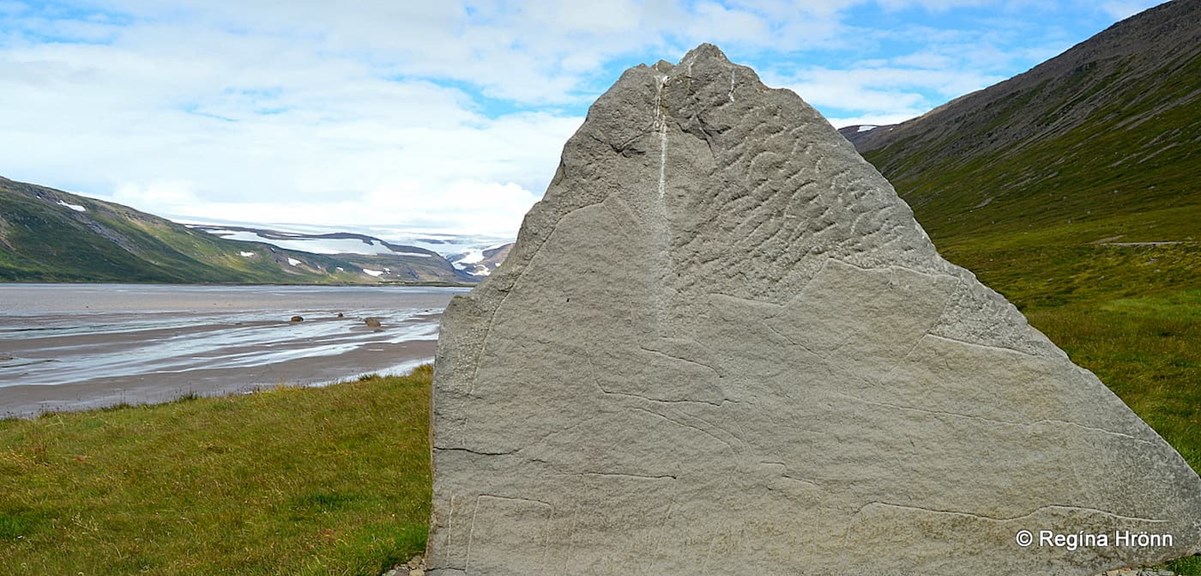
The memorial for Sigvaldi Kaldalóns - if you look closely you will see a bas-relief of Sigvaldi playing on a grand piano
Sigvaldi Kaldalóns (1881-1946) was one of Iceland's beloved composers and a medical doctor, who served the medical county of Nauteyri from 1910-1921.
He was born in Vaktarabærinn house in Garðastræti in Reykjavík, which is one of the oldest and cutest houses in the oldest part of Reykjavík, Grjótaþorp village. Vaktarabærinn was most likely built in 1848.
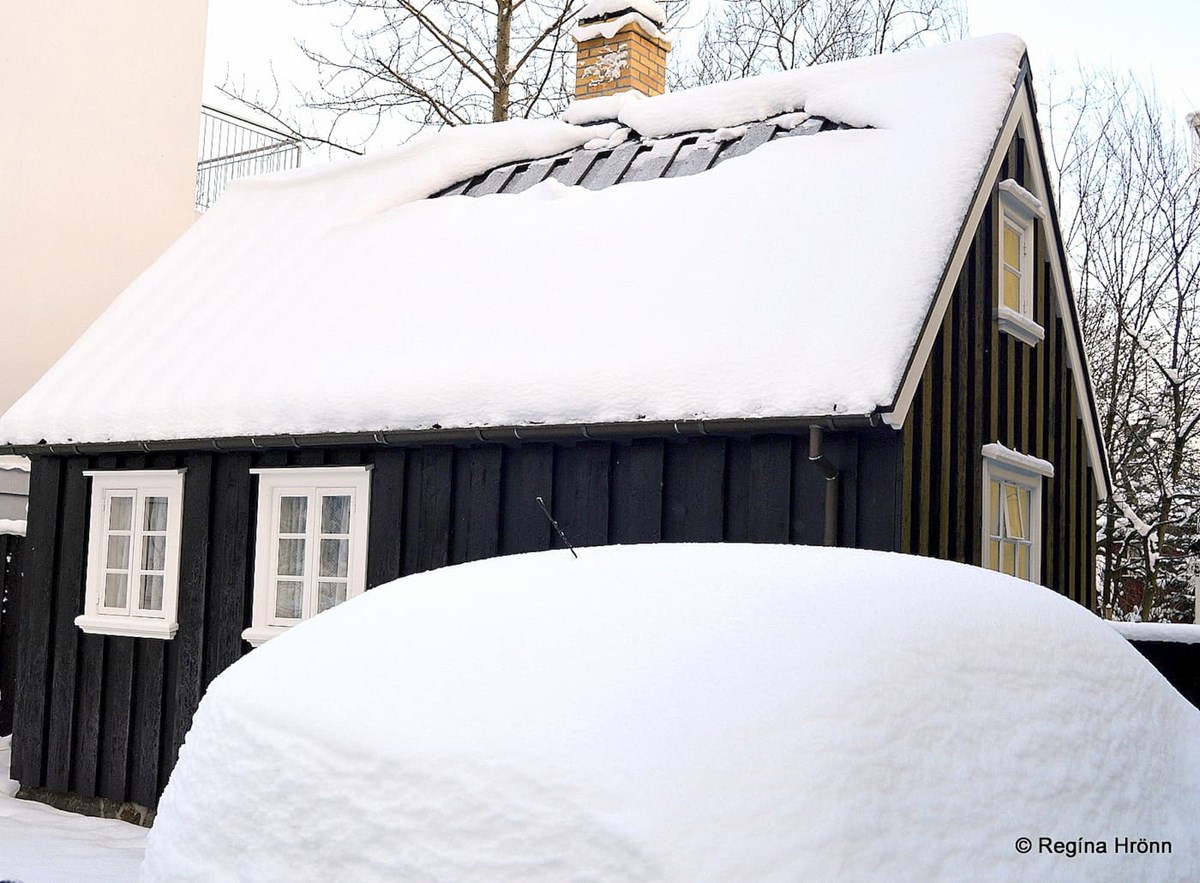
Vaktarabærinn timber house in Reykjavík in deep snow
Sigvaldi, later on, lived at Ármúli close to the mouth of Kaldalón. Sigvaldi composed some of Iceland's most beloved songs and is loved and cherished by us Icelanders.
The low-relief on the memorial stone, which was erected in 1999, was made by Páll from Húsafell in West-Iceland, but you can see his beautiful artwork in many places in Iceland.
And if you visit Húsafell in West-Iceland, then you can see a myriad of his carved stones. I have included Húsafell in my travel-blog about the Silver Circle.
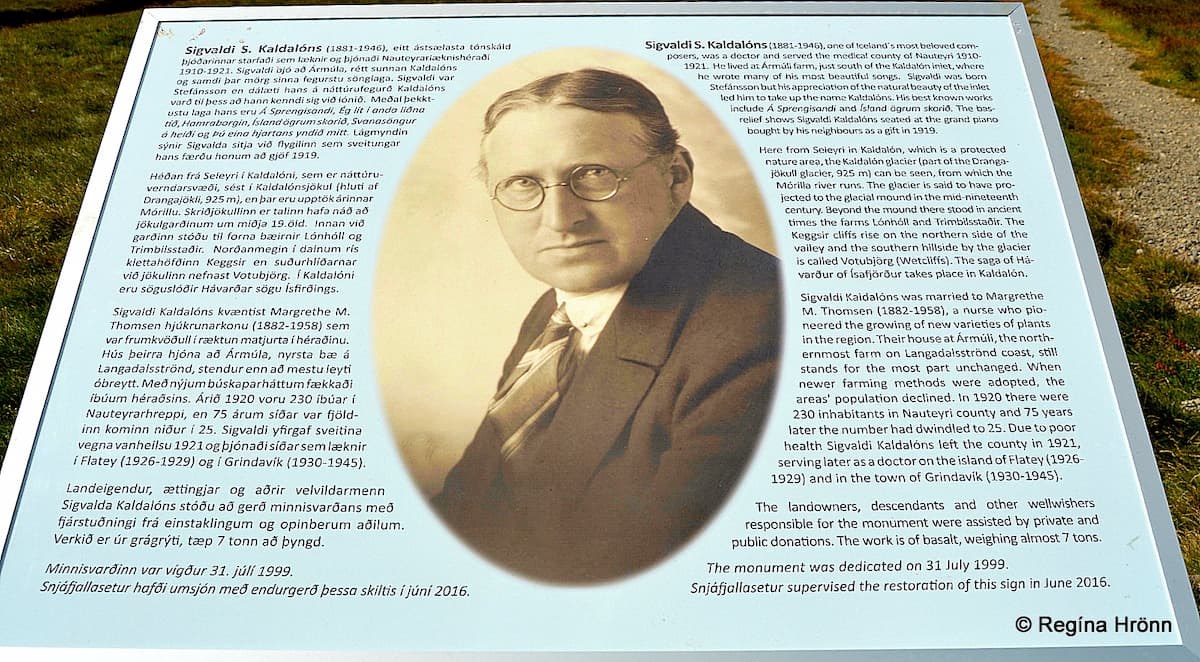 The information sign tells us about Sigvaldi Kaldalóns
The information sign tells us about Sigvaldi Kaldalóns
By the memorial basalt rock, you will find an information sign where you can read about the life of Sigvaldi Kaldalóns. The grand piano was a gift from some of his friends in the district to Sigvaldi. Sigvaldi owned an old organ and his friends thought that he needed a better instrument.
They had the grand piano secretly transported from the USA and when Sigvaldi was on a doctor's visit to the Æðey island they moved the grand piano into the living room at Ármúli farm.
There was only one problem, the grand piano couldn't fit through the door! So Sigvaldi's father cut through the wall and took out the window - that sufficed so the grand piano could be moved into the house.
While they were doing this they noticed that Sigvaldi was returning back from the island on a boat so his father had to fix the wall and the window in a great hurry.
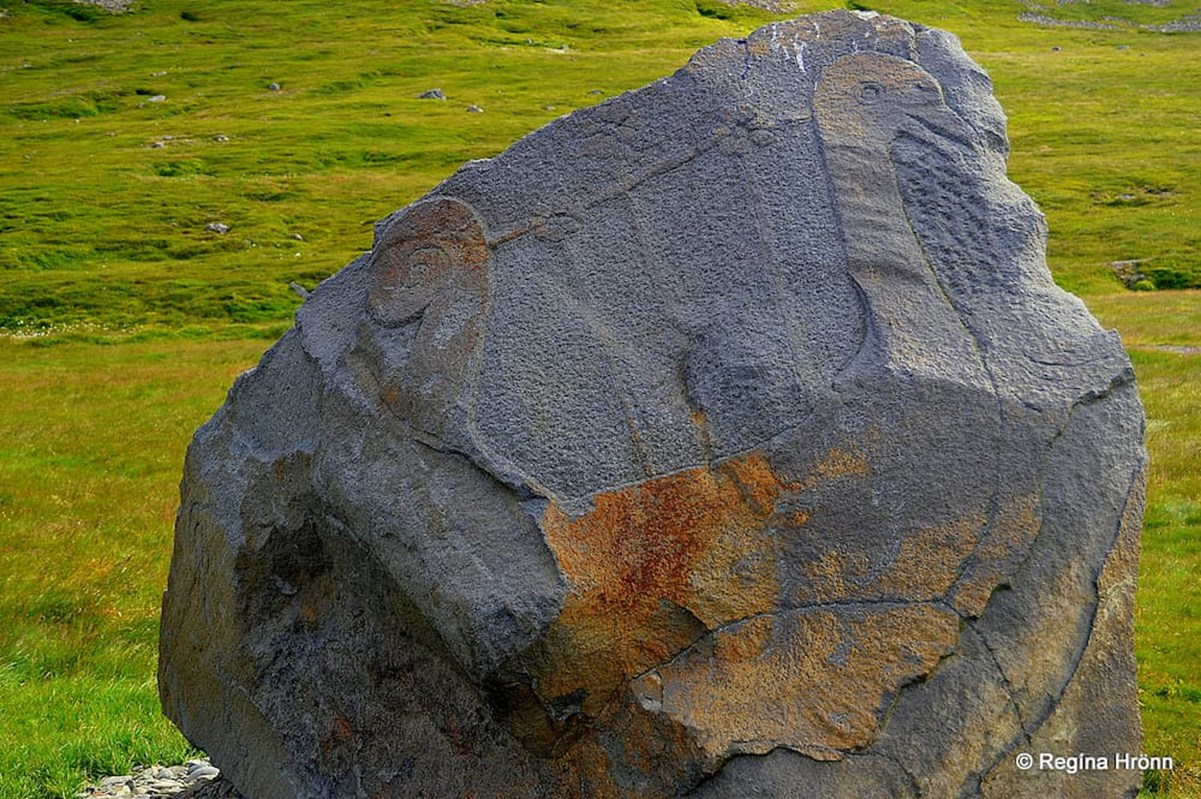
The other side of the memorial stone for Sigvaldi Kaldalóns
Sigvaldi was flabbergasted when he entered his living room and saw the shiny black grand piano waiting for him. And on a golden plaque on the grand piano was written that it was a gift to Sigvaldi from his friends. I must say that it brought tears to my eyes when I heard this story.
The beautiful hike to Drangajökull glacier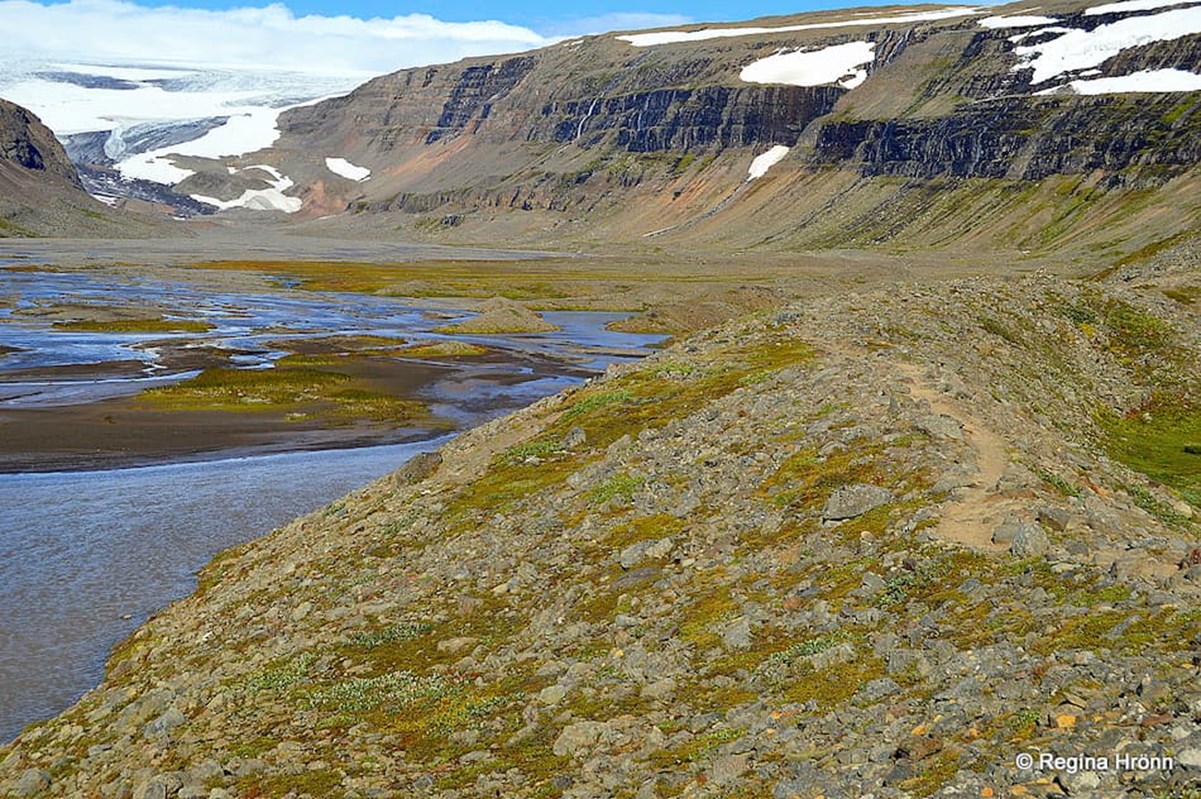
Hiking to Drangajökull
We now drove further on closer to the Drangajökull glacier and stopped by the huge glacial drift which blocked the view.
Drangajökull glacier, which is Iceland's 5th largest glacier, is the only glacier in the Westfjords of Iceland.
And it is Iceland's only glacier with an altitude entirely below 1000 meters (the highest point is at 925 meters). This part of it, which we will be seeing is called Kaldalónsjökull glacier (Lónsjökull).
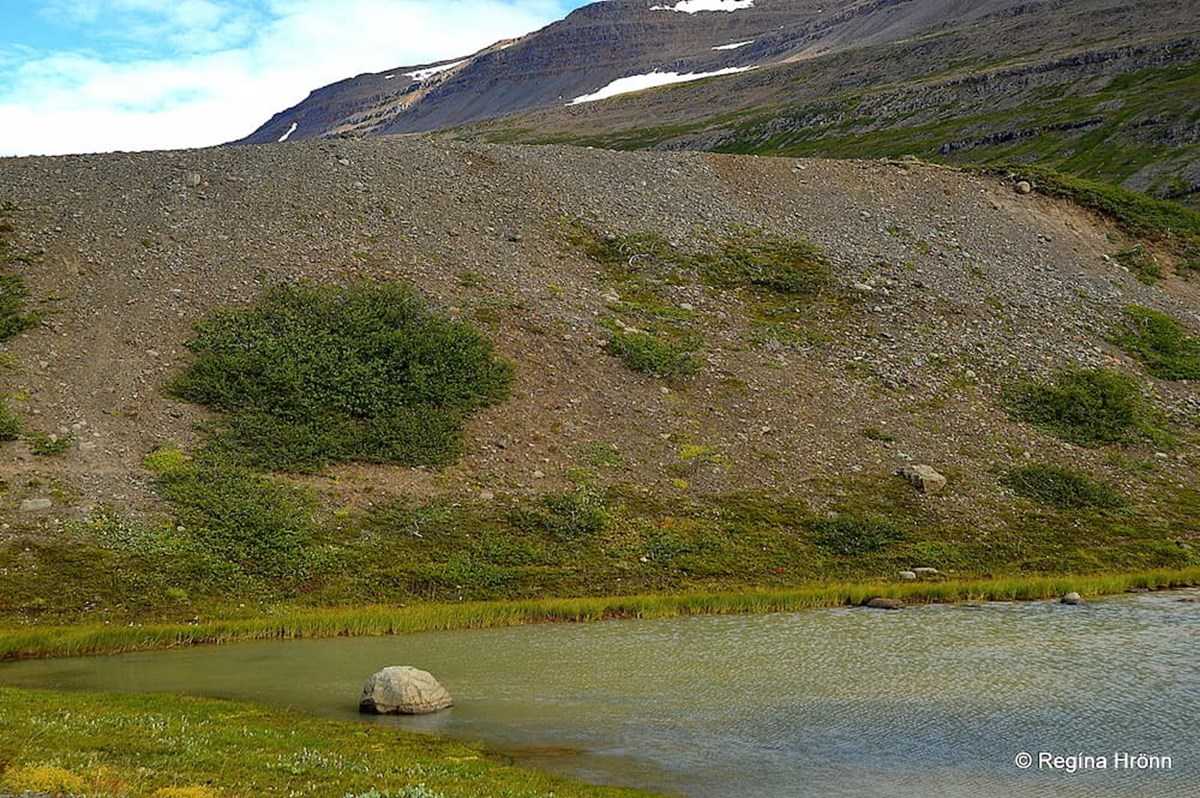
The glacial mound by the parking lot
I read on the information sign that it is believed that the glacier had projected to the glacial mound back in the mid-nineteenth century. And the icefalls in Drangajökull glaciers flow forward with a few decade's intervals.
Drangajökull is not shrinking though entirely, as far as I know, but it has got periods when it is actually growing, the only one of Iceland's glaciers.
It has got cycles of 50-60 years during which it recedes and grows. I have read that for the first few years it grows and then recedes for decades.
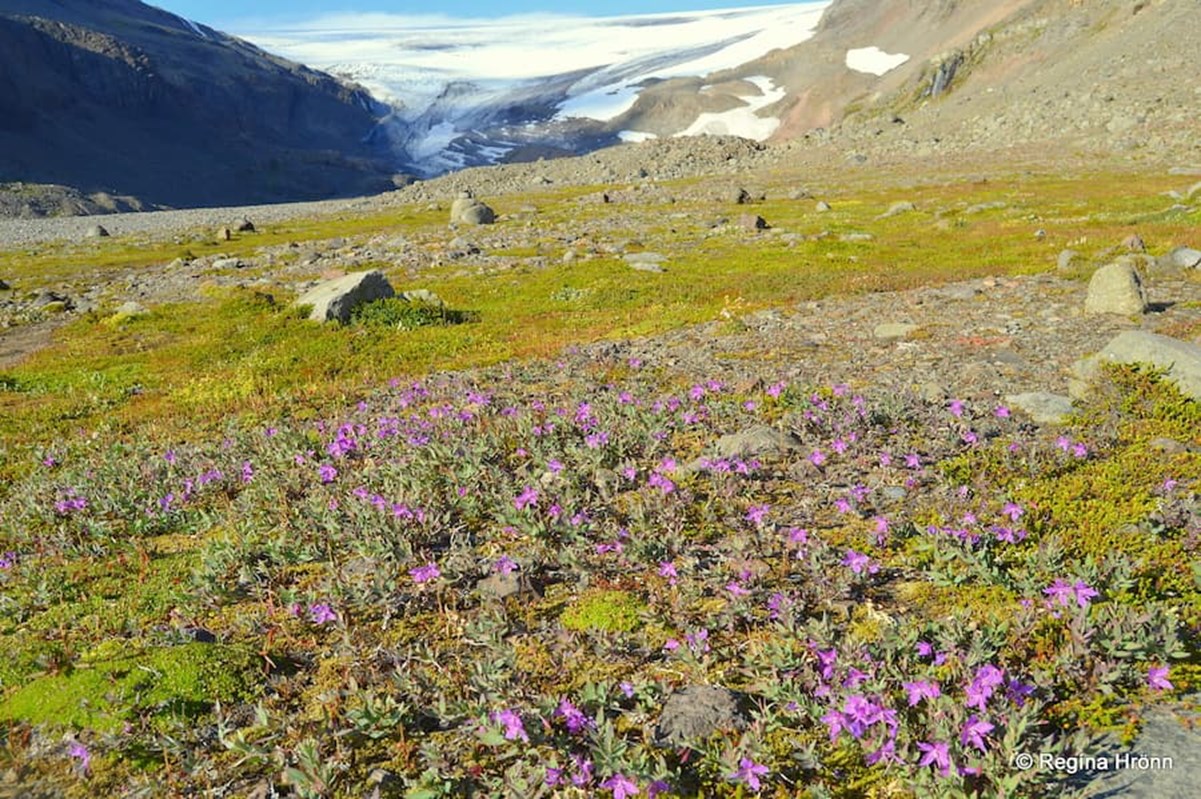
The hike to Drangajökull glacier
We parked by the glacial mound and followed the trail leading towards the Drangajökull glacier.
The proprietors of our hostel in Reykhólar on the southern side of the Westfjords region, where we stayed for 3 days, had told us about this hike.
So on this day, we drove from Reykhólar to the Drangajökull glacier and back.
Little did I know that nature here would be this beautiful. And the sunshine we got on the hike added to its beauty. It is an easy 3-hour-hike with glacial mounds, mountainside waterfalls, colourful flowers, and beautiful colourful rocks along the way.
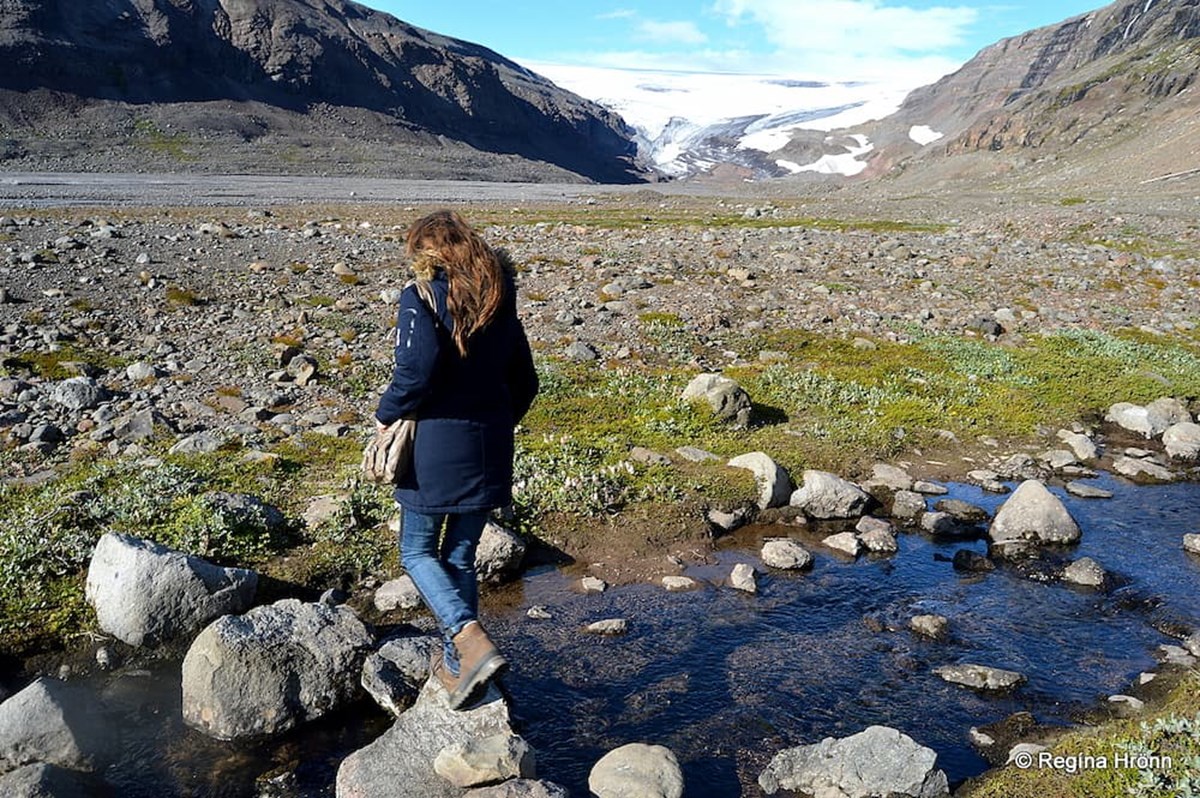
Hiking to Drangajökull glacier
We followed the path, passed the glacial mounds, and jumped over small creeks. Stones had been put into one creek to make it easier to cross it. So this hike was a walk in the park, as it were.
The brown glacial river Mórilla was all over the place and the many waterfalls joined the glacial river creating a mix of colours when the freshwater met the turbid glacial water, as you can see in my photo below.
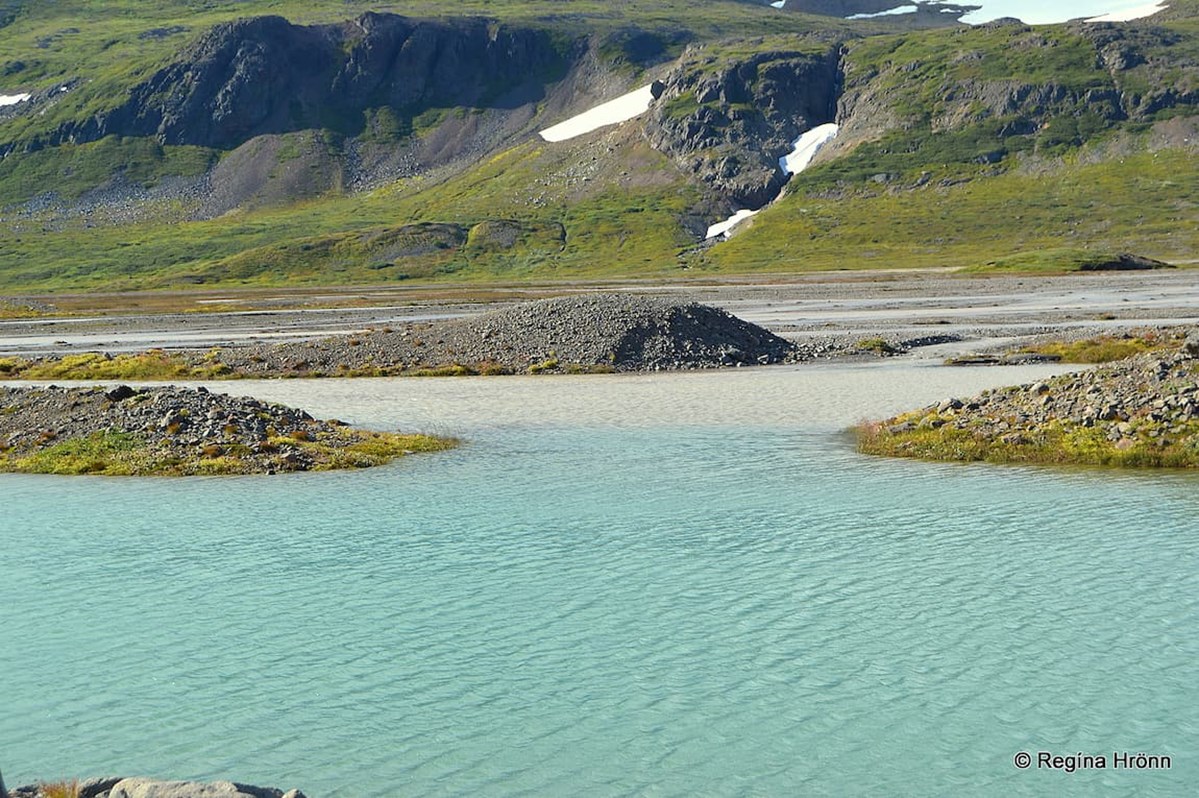
Freshwater meets glacial water in Mórilla creating different shades of blue and grey
Along the way, we saw many beautiful waterfalls cascading from the mountains.
I zoomed in on the waterfall below as it was so pretty in the sunshine. I spotted a red colour in the waterfall, and you can see a red vein behind the waterfall.
The red colour is ancient layers of soil (rauðalög), which are rich in iron, and stuck between lava beds.
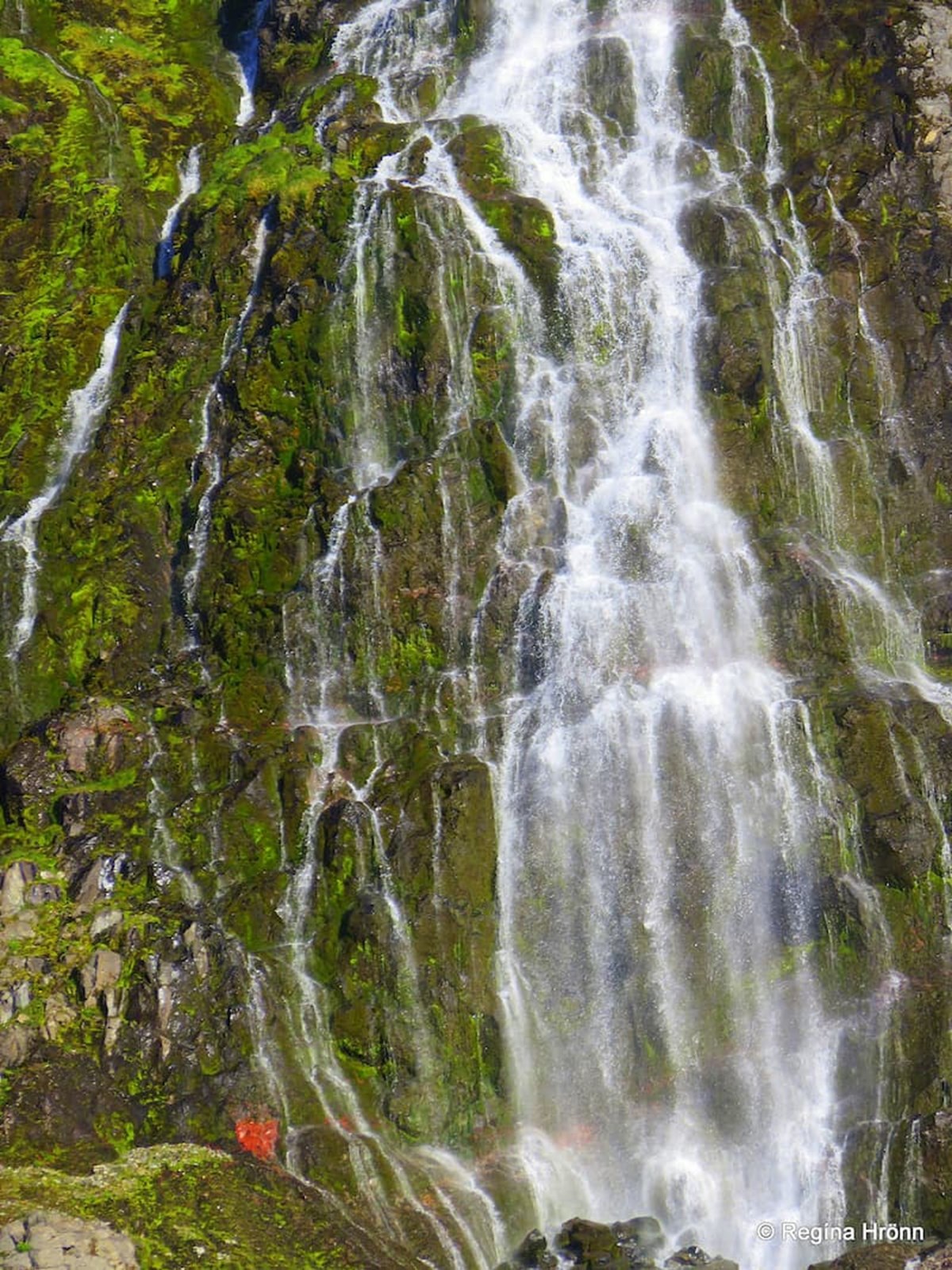
Waterfalls cascading from the mountains - see the red iron spot?
I had seen something similar by and behind Dynjandi waterfall, the Jewel of the Westfjords.
See my travel-blog: The magnificent Dynjandi Waterfall - the Jewel of the Westfjords of Iceland
I also spotted many colourful rocks on the way, yellow and orange, blue and different colour combinations, and was forever stopping to pick them up and admire them. Some of them were huge.
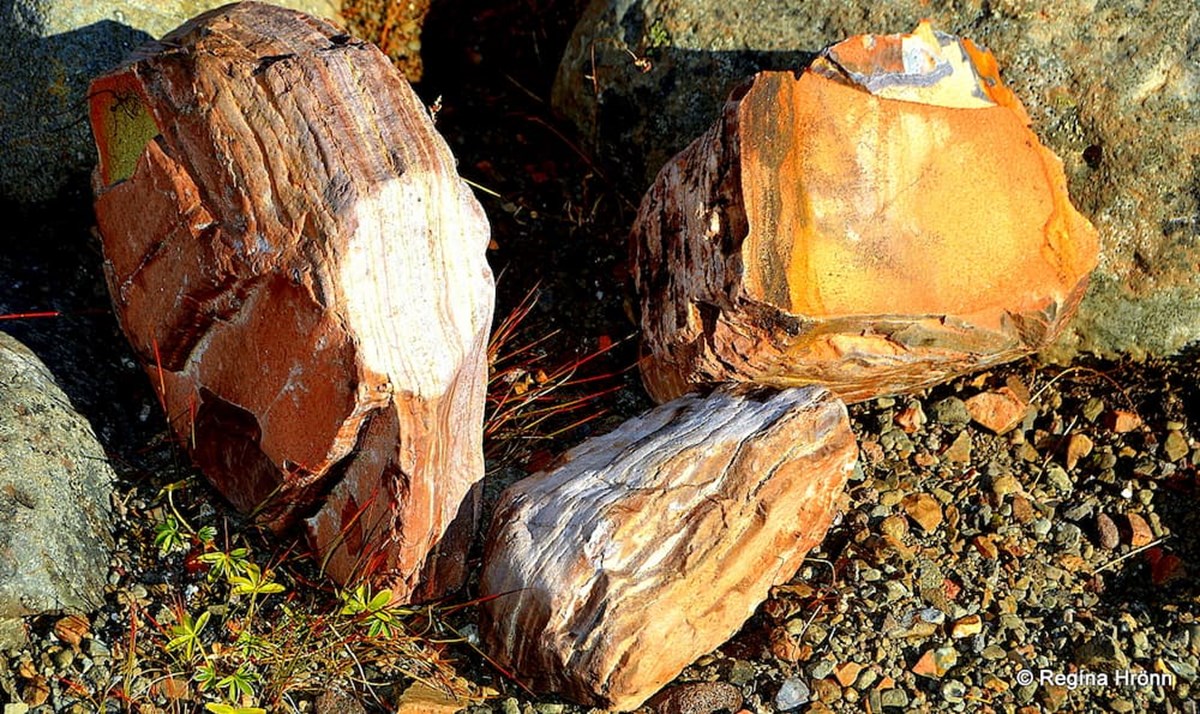 Colourful rocks on the hike to Drangajökull
Colourful rocks on the hike to Drangajökull
I own a large collection of rocks from different parts of Iceland and picked one small piece for my collection.
It slowed us down a bit that I was forever picking up rocks and taking photos, but still, the hike was only 3 hours as I had read beforehand.
And what a hike :)
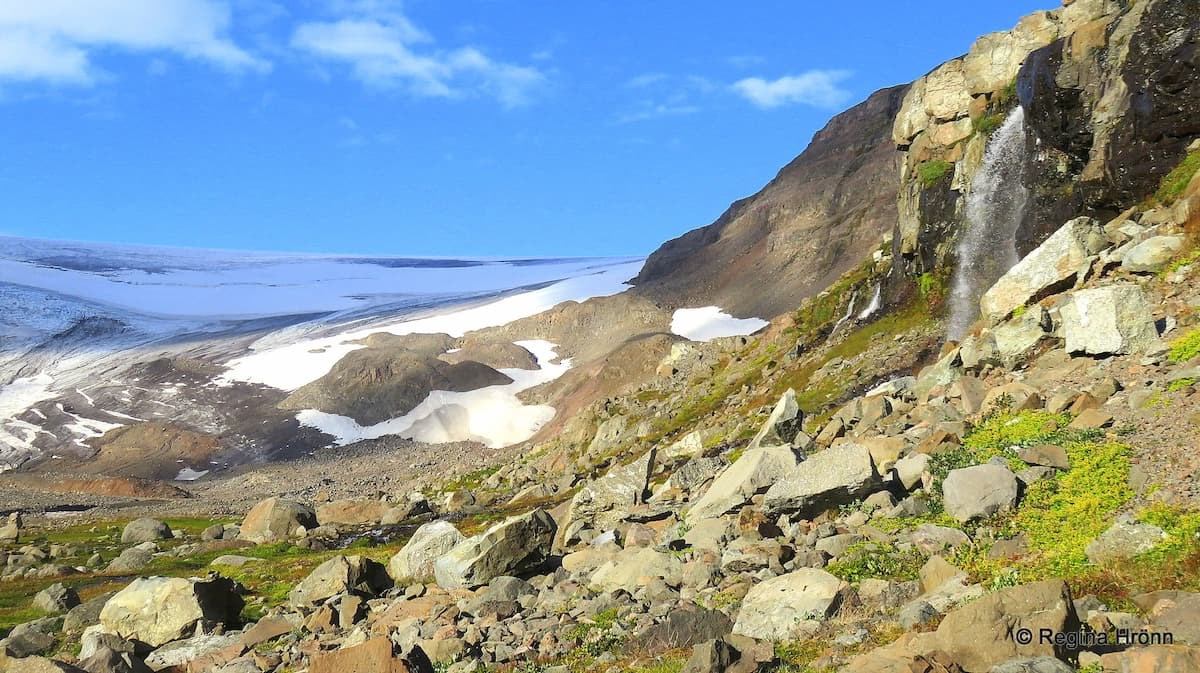
By the end of the hike, we stopped here and admired the glacier and the surroundings
We had by now almost reached the end of the track and more beautiful waterfalls appeared.
As we got closer to the glacier we could see waterfalls cascading from the waterfall,which was a breathtaking sight.
We had started the hike late in the day and thus didn't want to go any closer to the glacier than the end of the trail, as to not be caught there in the dark as the hike back from the glacier is 1.5 hours.
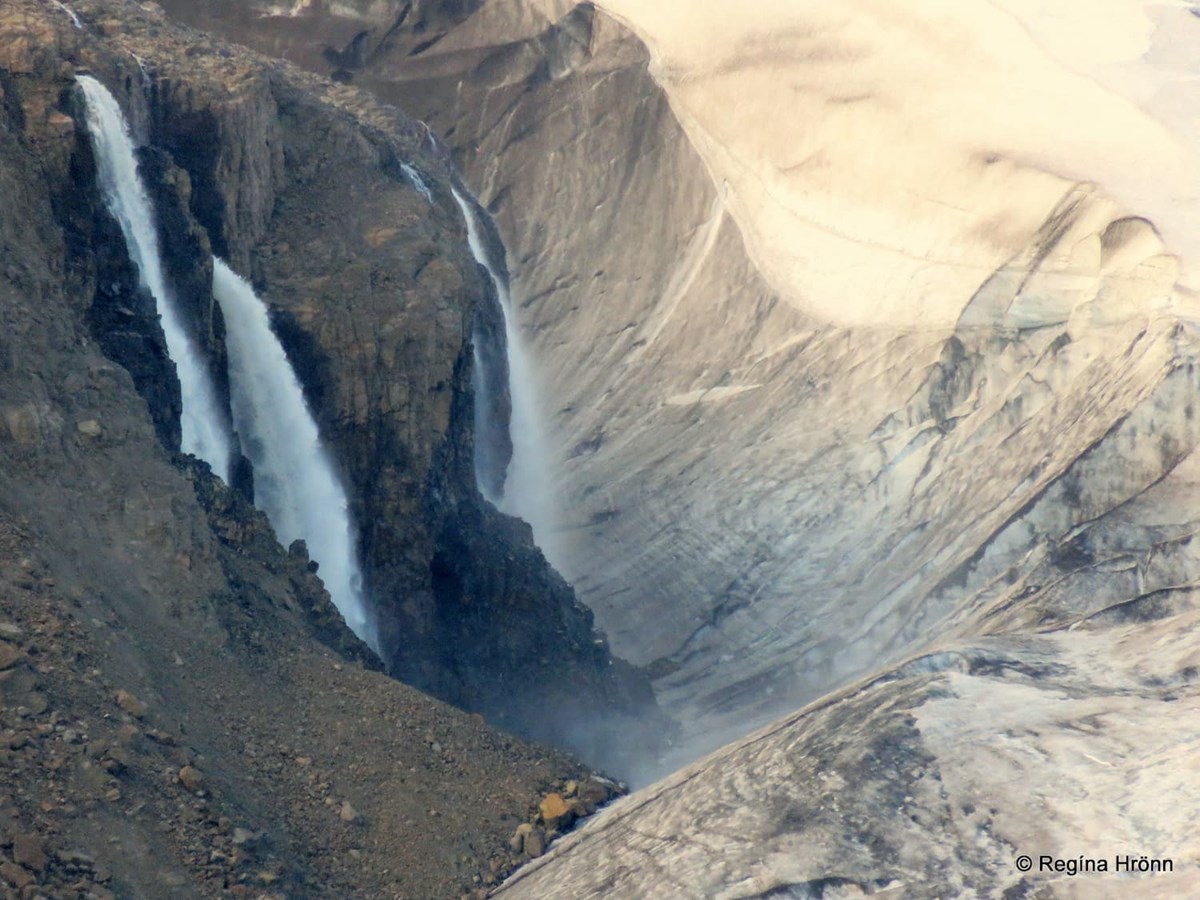
Waterfalls cascading by the glacier
Also, it is not safe to go close up to glaciers without a guide as there is often quicksand close to glaciers.
And a word of warning, never go unaccompanied on a glacier walk as there are deadly fissures in glaciers.
If you want to go on a guided glacier hike then there are many different ones to choose from: Guided glacier hikes in Iceland.
The glacial river Mórilla is the glacier's discharge and little by little fills up the fjord with sediments.
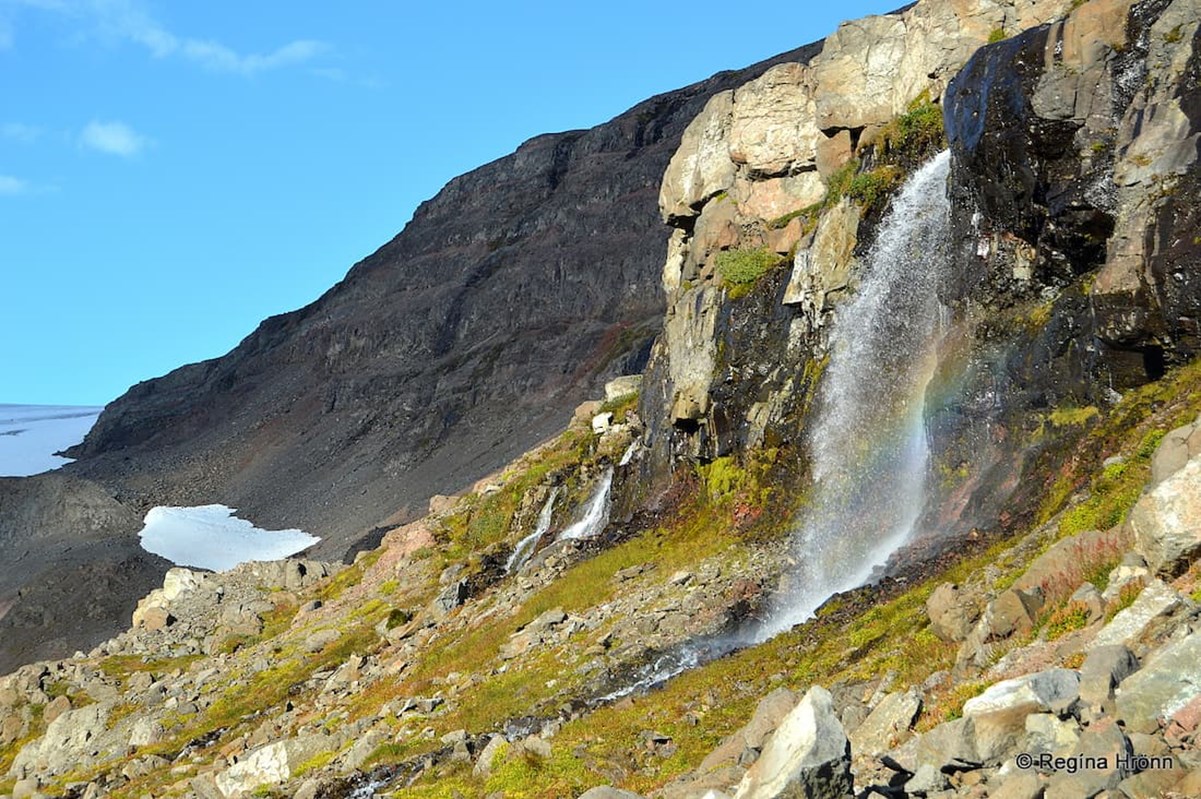
By Drangajökull glacier
We had been alone on this hike, which was heavenly, but met some hikers on our way back. Apparently, they didn't mind being there in the dusk.
On our way back we saw some white sheep, but one of the sheep stood out so I zoomed in on it to have a closer look as I didn't want to go closer and scare them away.
The sheep was black and had a beige blanket on its back.
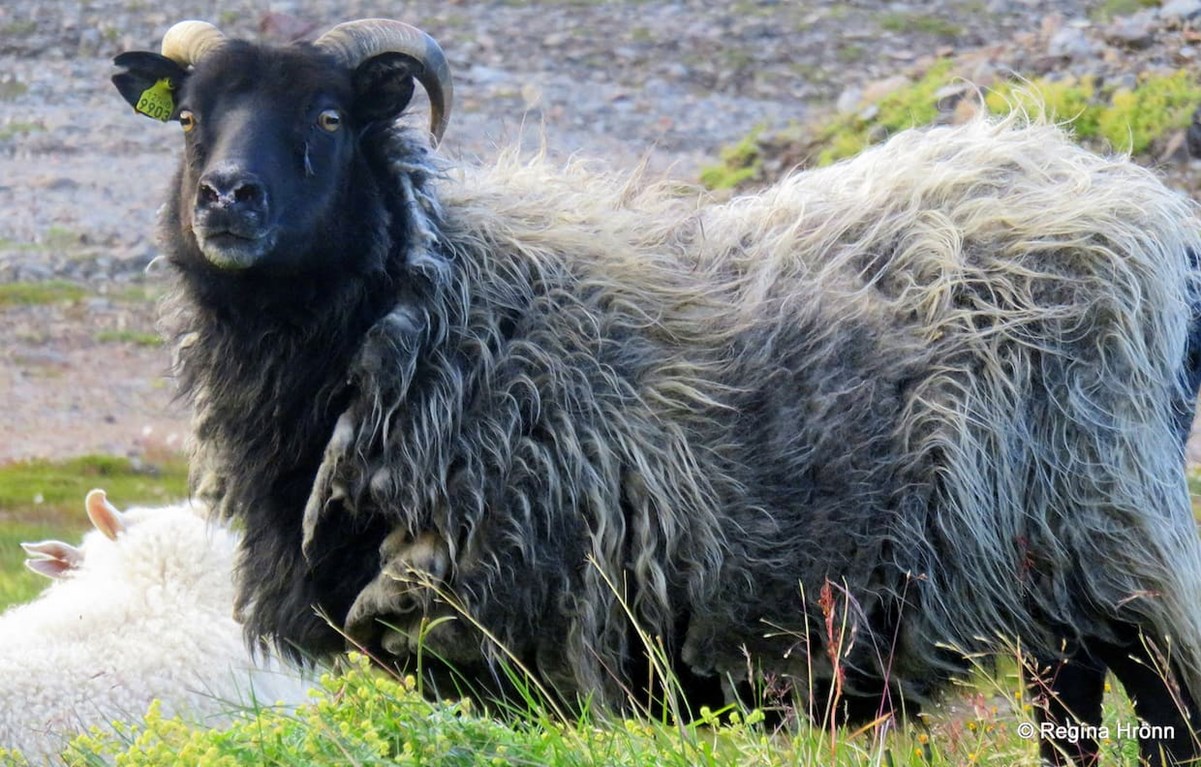
The leader-ewe
I suspected that it might be a leader wether, that unique type of sheep which lead the flock of sheep and can only be found in Iceland. And sure enough, when the leader wether, which turned out to be a leader-ewe, spotted us it gave us a sharp look and I could see in its eyes that she didn't like our presence.
It became concerned for the other sheep and started rounding them up and directing them into safety. Not that we were going to harm them, but the leader-ewe couldn't know that.
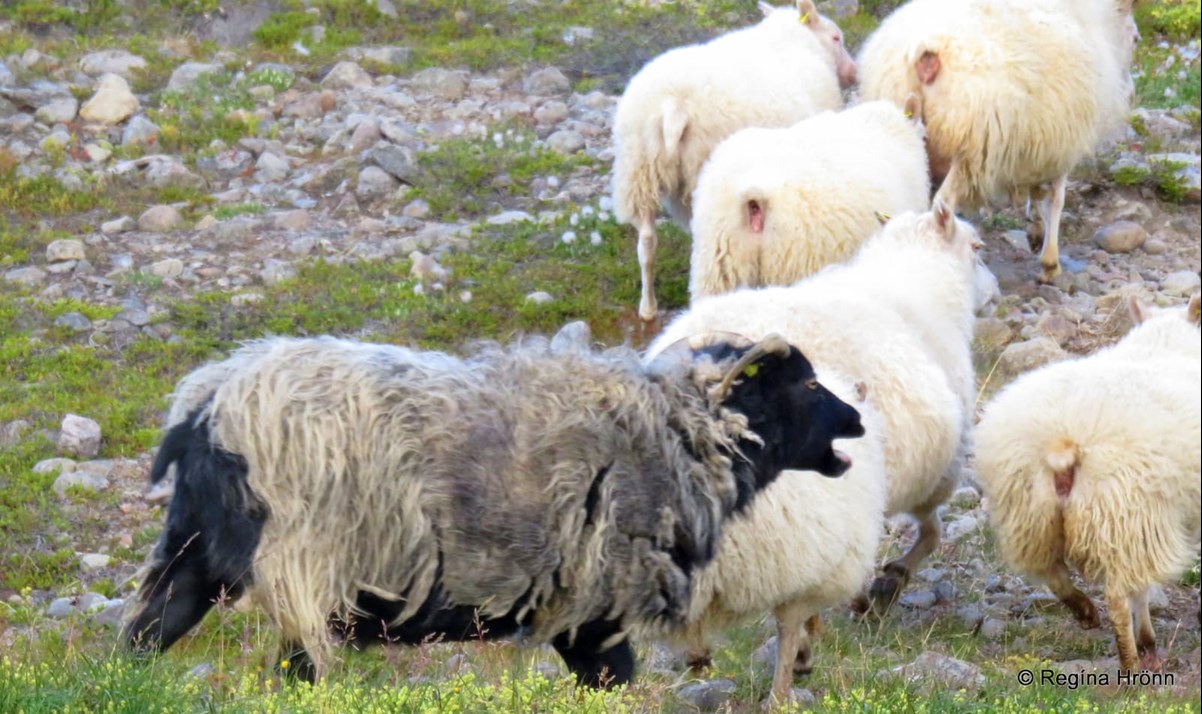
The leader-ewe directing the other sheep into safety
The leader wethers are very intelligent and have a mind of their own. They have a great sense of direction and can foretell weather changes, especially when storms are on the way, then they flat out refuse to go out with their flock.
I have read many stories about the farmers having to drag out leader wethers who refuse to go out with their flock. Only to find out later that a blizzard was on the way, which could have killed all the sheep.
There are also many stories about the leader wethers finding their way back home to safety with their flock in a blizzard with zero visibility. 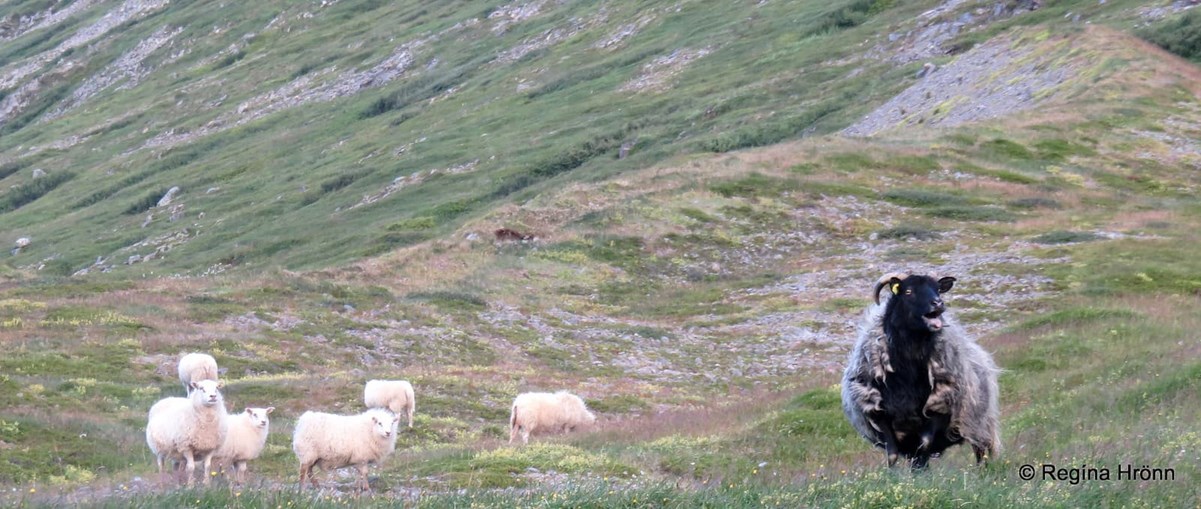
The leader-ewe protecting its sheep and bleating at us to stay away
The leader wethers are very protective of their sheep and have great affection for them. They always make sure that they are safe and that no sheep is lost or has wandered off.
I have such great respect for them and didn't want this leader-ewe to think that we were a threat.
When I looked back I saw the leader-ewe proudly standing on top of one of the old turf farm ruins bleating at my husband. It didn't seem to mind me much though, but it might have looked at my husband as a threat.
It didn't stop bleating until we were far away, almost as it was telling us to stay away and never come back - or else... ;)
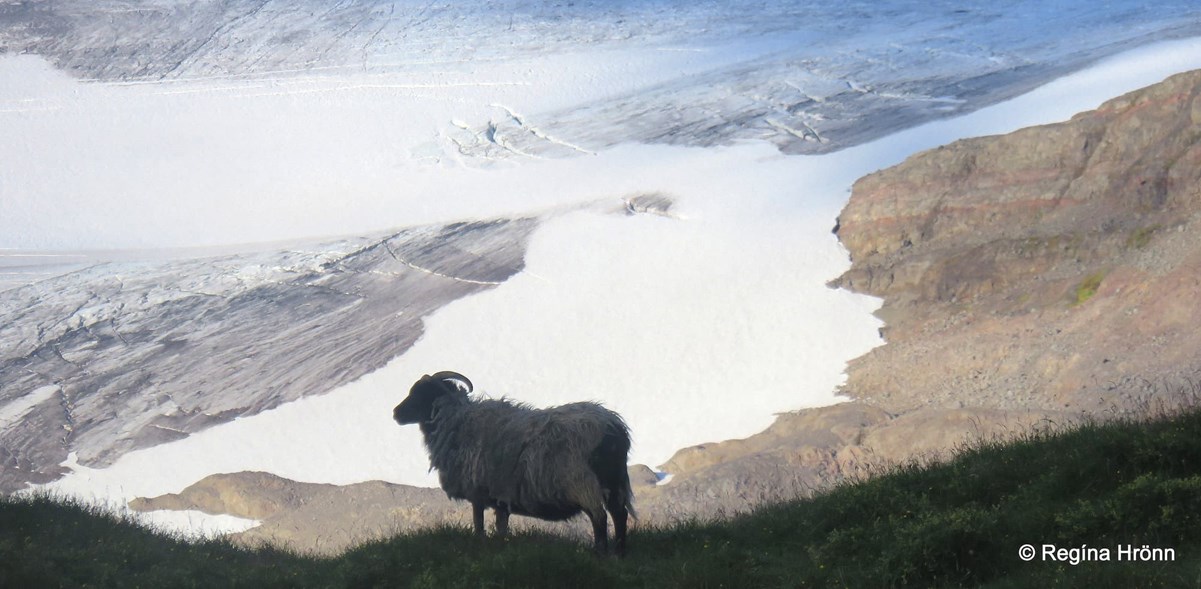
The proud leader-ewe with the backdrop of Drangajökull glacier
The leader sheep are truly amazing animals and I could feel great respect for the fearless leader-ewe when I looked back for the last time and saw her standing tall with the backdrop of the Drangajökull glacier.
What a perfect ending to a beautiful hike :)
You can read more about this unique breed in my travel-blog: The Study Centre on Leader-sheep in North-East Iceland - the Unique Breed of Icelandic Sheep
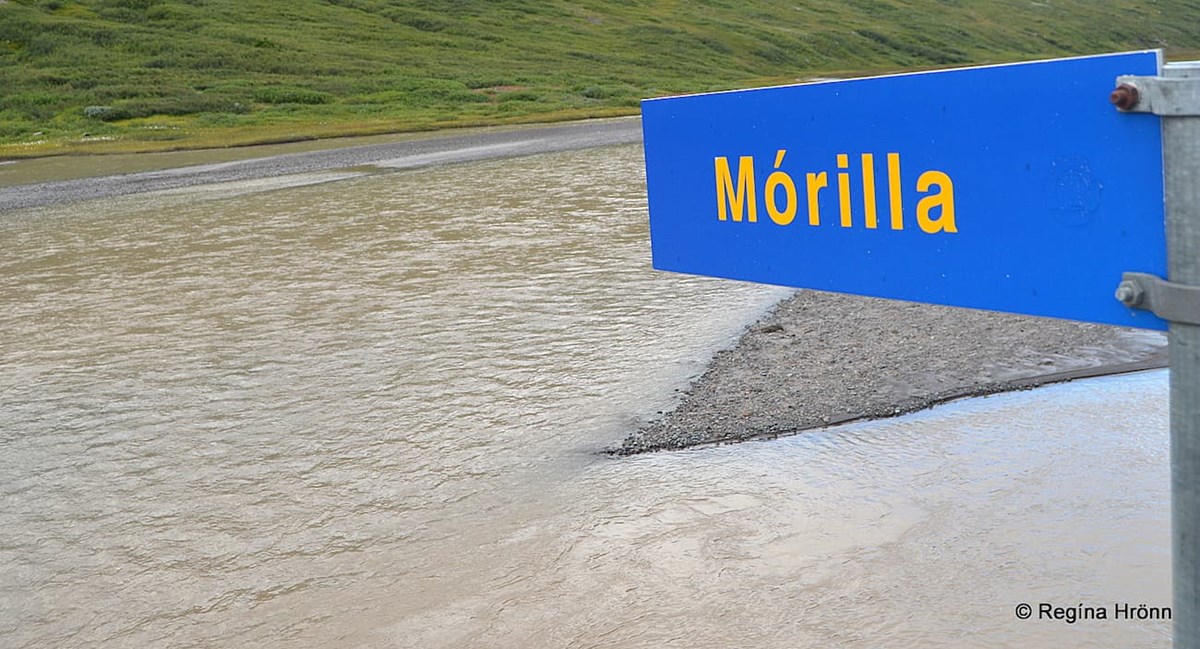
By the bridge of the glacial river Mórilla
When we reached the car we crossed the river Mórilla on a bridge and drove to the end of the road and visited Unaðsdalskirkja church.
The roads in this area were built in 1956 and 1964. Above this area is the Hornstrandir nature reserve. And on the southwest side of Drangajökull glacier is the Strandir area.
Unaðsdalskirkja church - the end of the road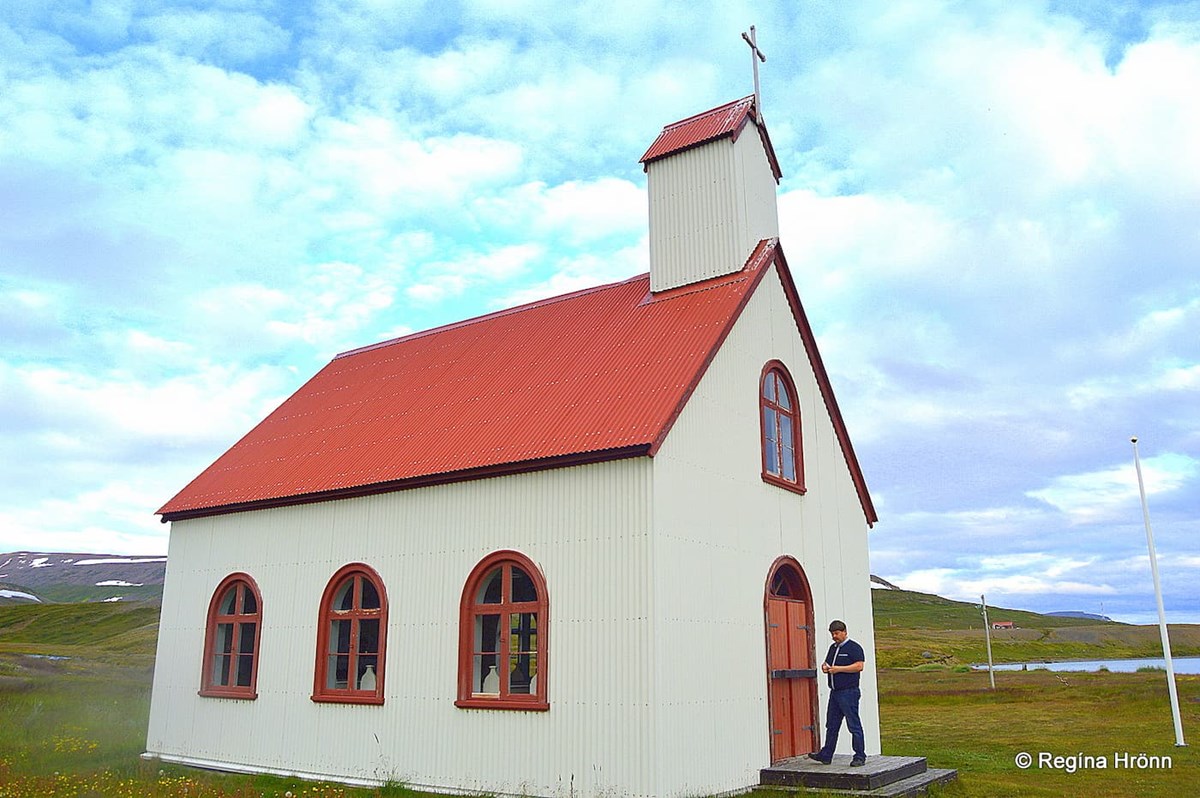
Unaðsdalskirkja church
We visited Unaðsdalskirkja church which is where the road ends. This is such a lovely name, Unaðsdalur - Pleasure Walley :)
A turf church was built in Unaðsdalur in 1866-1867. The current timber church, which is clad in corrugated iron, dates back to 1898.
The newer church is closer to the sea than the turf church stood. Unaðsdalskirkja was repaired and electrified in 1969, and from 1990-1995 it was restored (ref. Kirkjur Íslands).
The church was preserved back in 1990, but all churches which reach the age of 100 years are preserved.
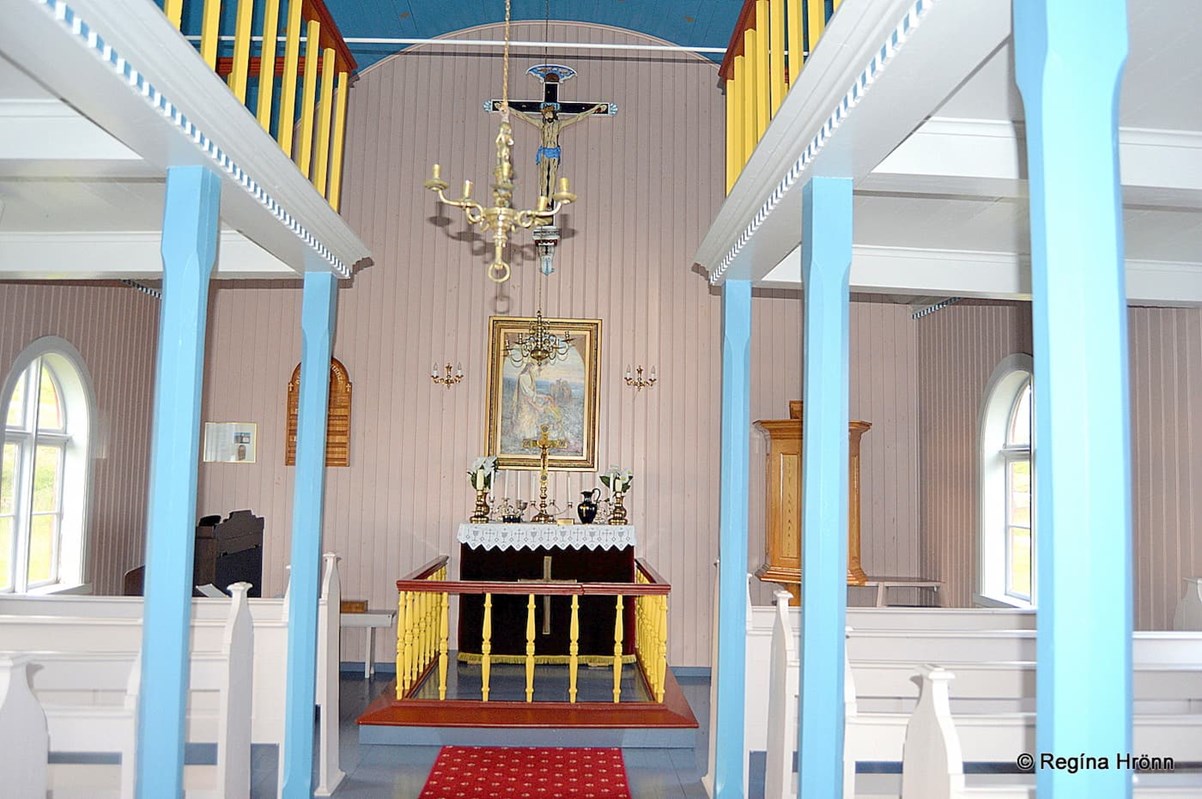
Inside Unaðsdalskirkja church
Unaðsdalskirkja church is so beautiful on the inside, painted in bright cheerful colours. I love such brightly coloured churches :) The altarpiece from 1899 is by Anker Lund and shows Christ healing Bartimaeus the blind
I am always in awe when I enter these churches, but unfortunately, they now have to remain closed due to vandalism, and it sometimes takes some doing trying to find the person with the key.
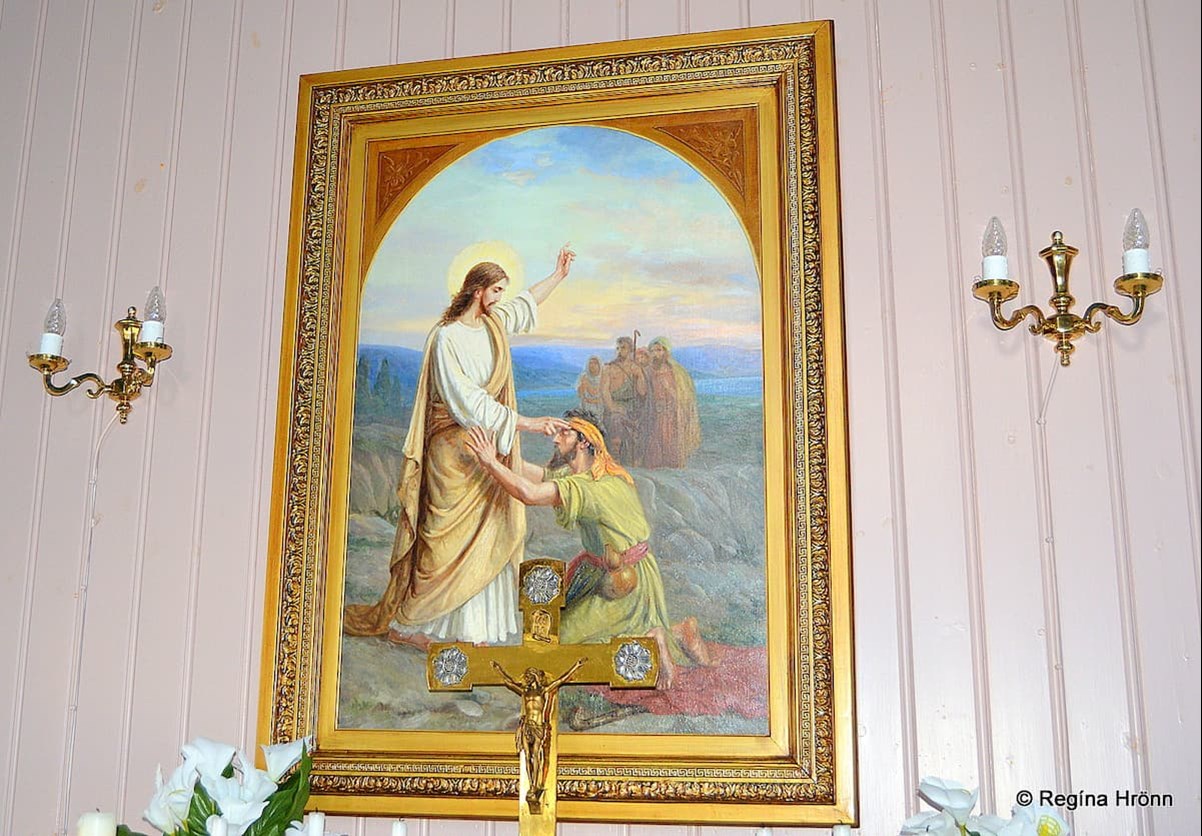
The altarpiece in Unaðsdalskirkja church
Unaðsdalskirkja church stands by the mouth of the river Dalsá. Further on is Tirðislmýri farm, on a private road. It was eerily quiet here and nobody around.
But just imagine what Unaðsdalur valley must have looked like when there was a vibrant community here and people were flocking to mass. Nowadays there is a mass in Unaðsdalskirkja only once a year.
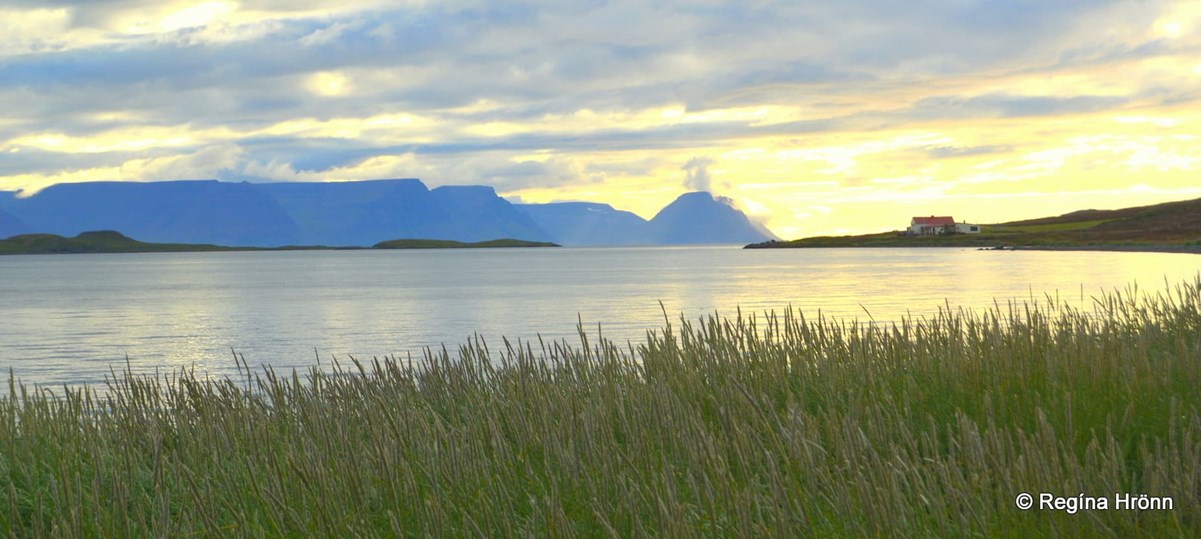
The beautiful view from Unaðsdalskirkja church - we were almost losing the light - Mt. Bolafjall in the distance
The settler Ólafur jafnakollur settled this land and lived in Unaðsdalur valley.
We also stopped at the Snjáfjallasetur heritage center at Dalbær on our way back, where you can get good information about Drangajökull glacier, Sigvaldi Kaldalóns, and the surrounding area.
Melgraseyrarkirkja and Nauteyrarkirkja churches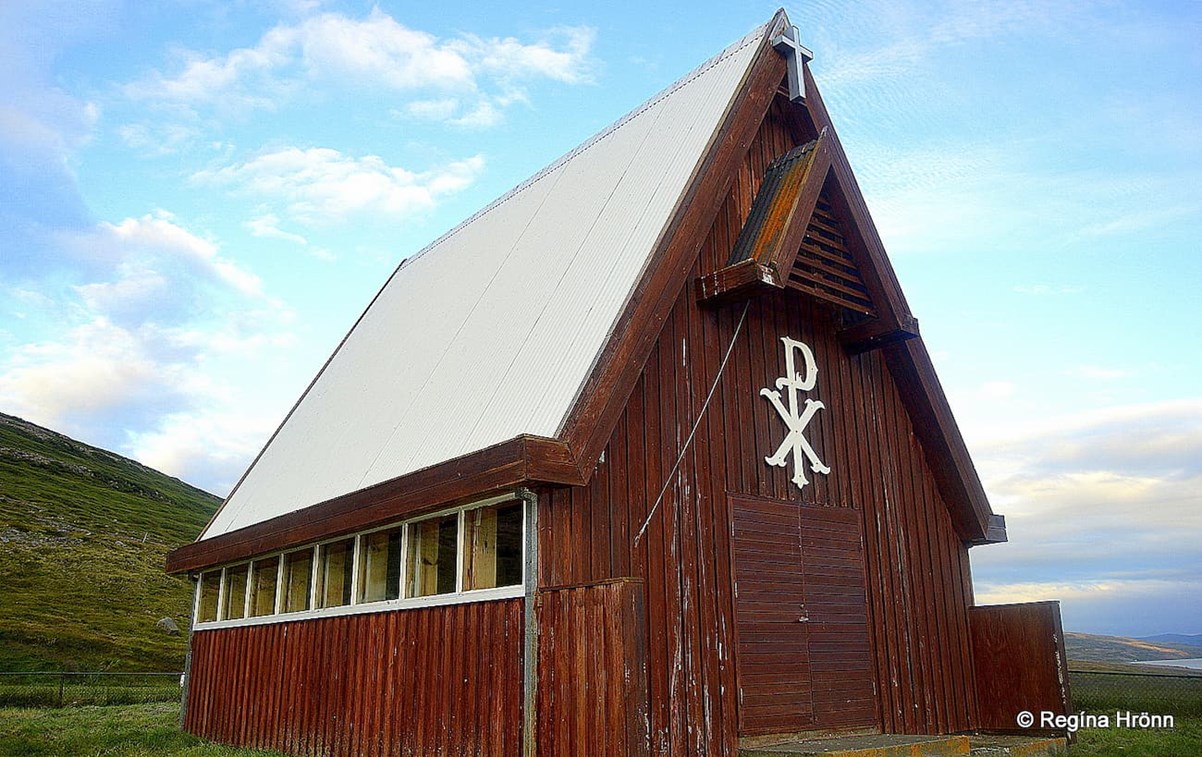
Melgraseyrarkirkja church
There are 3 churches by road 635 and the next church we stopped by is Melgraseyrarkirkja church.
There has been a church at Melgraseyri for centuries, but during a violent storm back in 1966, the church got damaged.
The more modern-looking timber and timber-paneled church was built in 1972 and can seat up to 60-70 people.
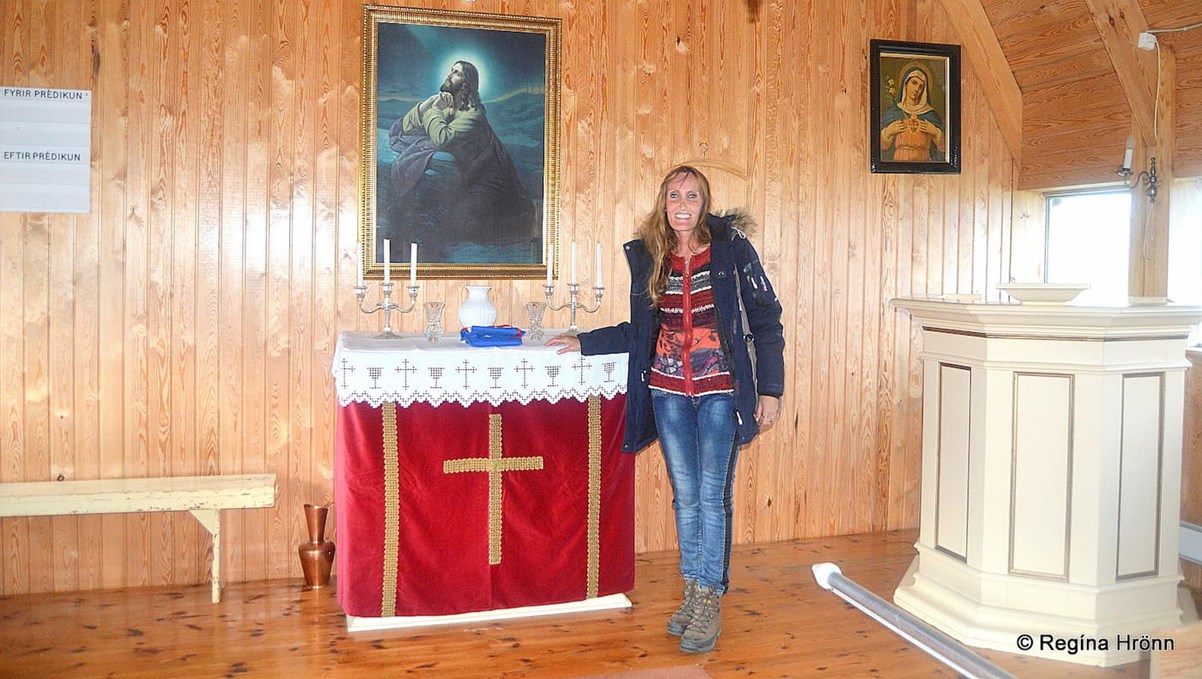
Inside Melgraseyrarkirkja church
I visit all the churches I see on my travels in Iceland and sometimes drive long distances to visit a church on my travels in Iceland. In my opinion, these churches are gems dotted around my country.
I have visited all the churches in the Westfjords apart from the churches at the Hornstrandir nature reserve. And I have by now visited 93% of Iceland's churches.
I am a big church fan and have visited all 48 churches in the City of London and am a member of the Friends of the City Churches. It is kind of a hobby of mine :)
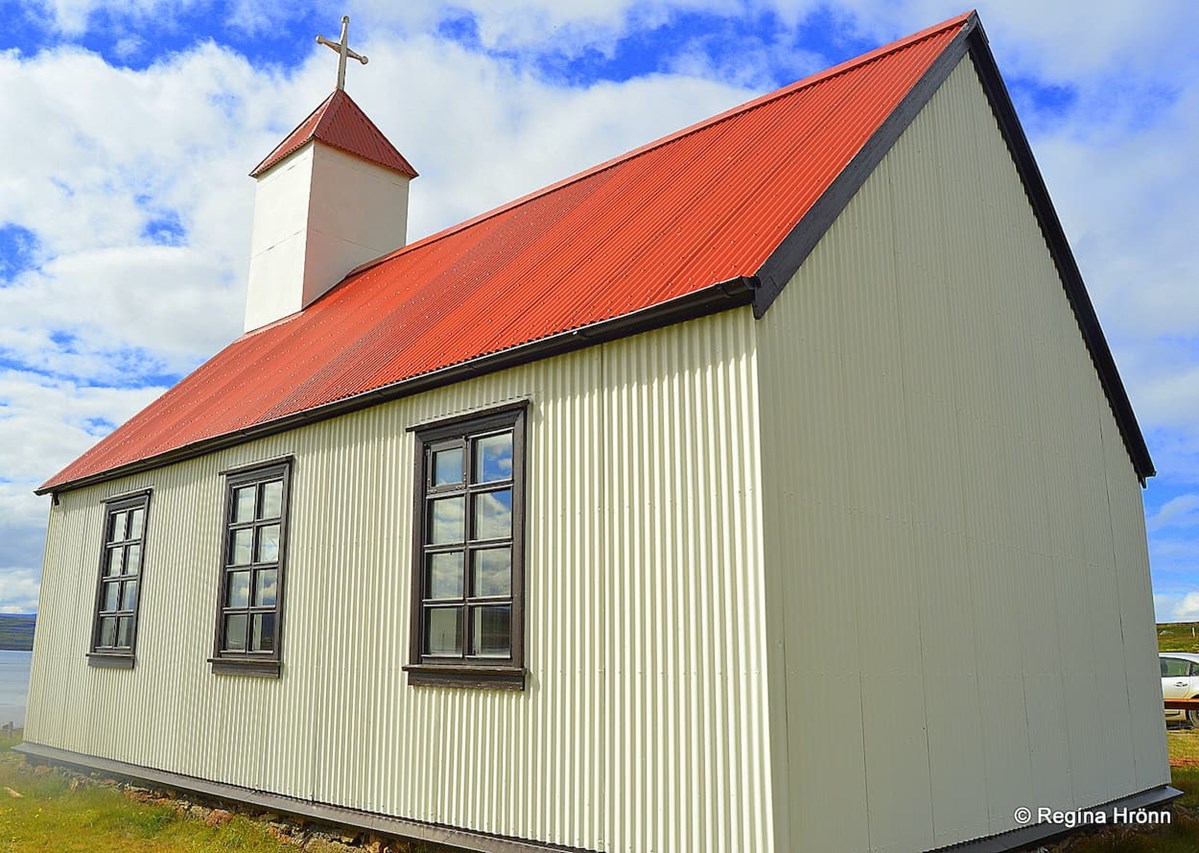 Nauteyrarkirkja church
Nauteyrarkirkja church
The 3rd church is Nauteyrarkirkja church at Langadalsströnd, erected in 1885 and consecrated in 1886. This was the first church site at Nauteyri, but had previously been at Kirkjuból in Langidalur.
This lovely little church, which we couldn't enter, is a timber church clad with corrugated iron. It was repaired in 1970 and renovated in 1985-1986.
Above the church door, you will see this colourful carved board. It says: "Þessa kirkju hefur reist óðalsbóndi Jón Halldórsson árið 1885" - "Jón Halldórsson, farmer, has erected this church in the year 1885".
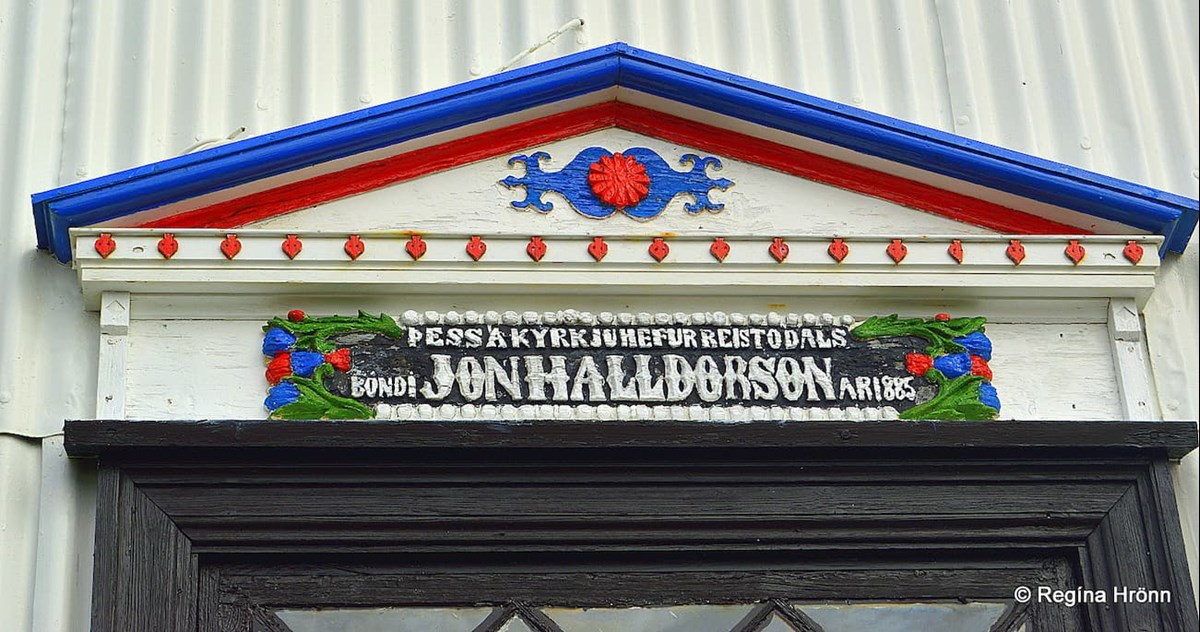
Nauteyrarkirkja church Westfjords
I wish we could have been able to enter it. We peaked through the windows and saw that it was panelled and the pulpit is white painted and so are the pews.
It looked really lovely and different from other churches I have visited.
Steinshús - the museum of Steinn Steinar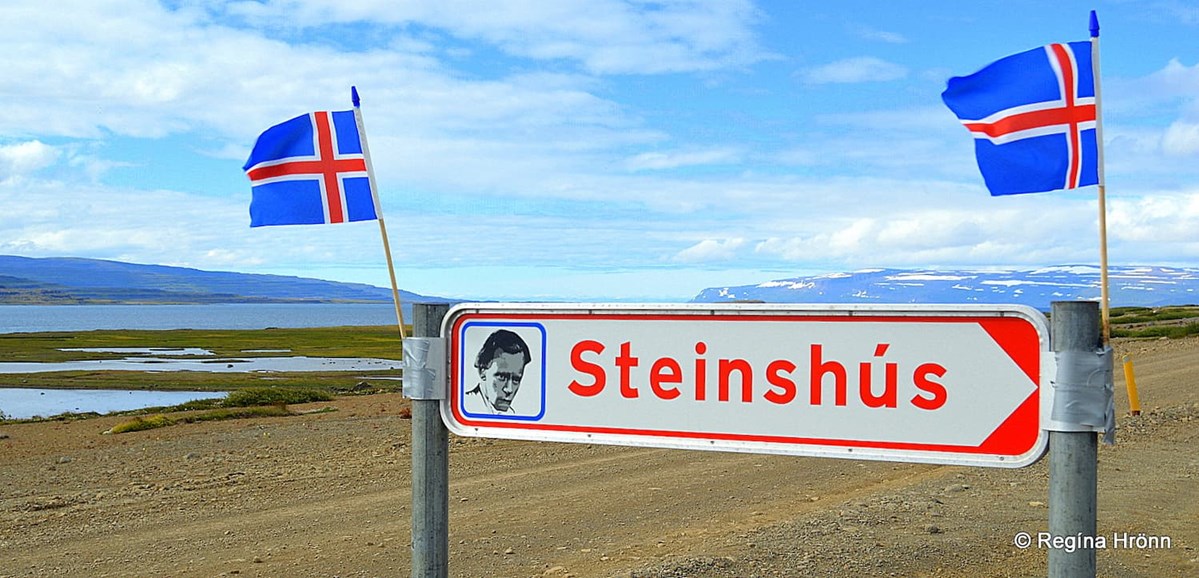
Steinshús museum
The last stop I want to show you by road 635 is Steinshús or the House of Steinn Steinarr, one of Iceland's well-known poets, but he is especially known for his modernist poetry.
Steinn was born as Aðalsteinn Kristmundsson in 1908 at Laugaland in Nauteyrarhreppur rural district, but Steinn Steinarr is his allonym.
You can look inside and have a look at the exhibition and have some coffee, waffles or meat-broth. We popped in for coffee and waffles.
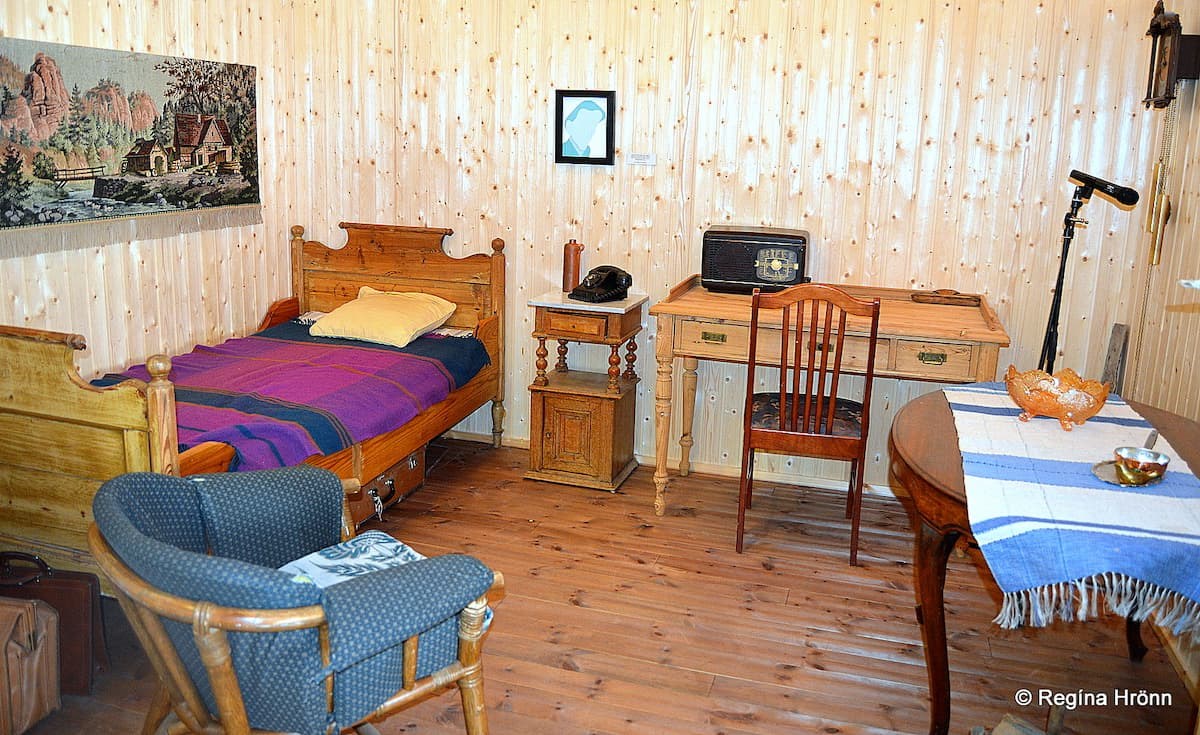
Inside Steinshús
These were our stops on Snæfjallastrandarvegur road number 635 and I hope that you have enjoyed travelling with me.
All in all, we spent 17 days in the Westfjords so I have written many more travel-blogs about the beautiful part of Iceland.
In the vicinity is Reykjanes to the west and Hólmavík to the south-east across Steingrímsfjarðarheiði heath.
See my travel-blog: A Visit to Reykjanes Geothermal Area in the Westfjords
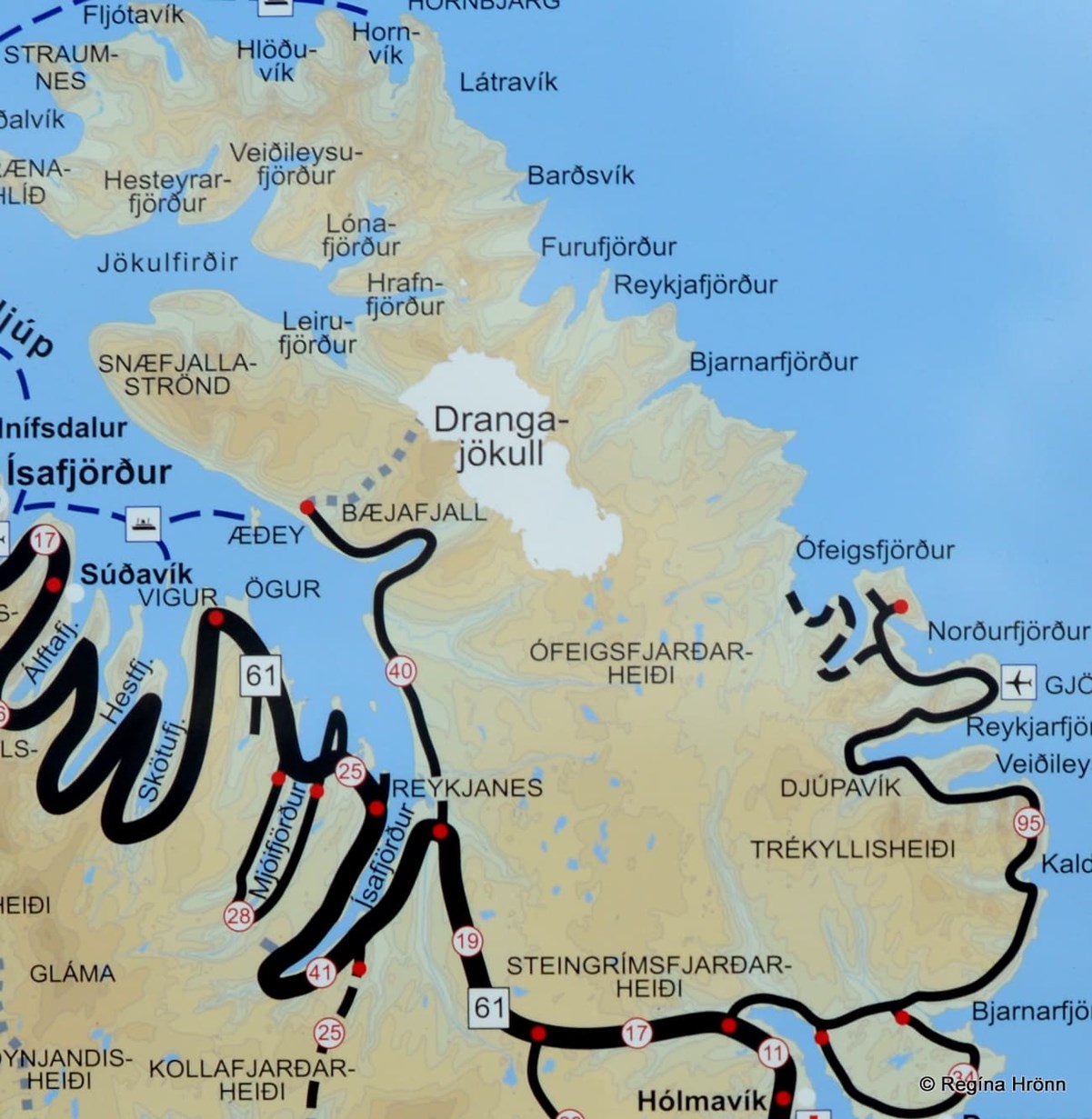
A map of a part of the Westfjords - you can see where we drove and then hiked to Drangajökull glacier
The travel-blogs I have written in chronological order about the northern part of the Westfjords are:
A lovely Visit to Reykjanes in the Westfjords
Vatnsfjörður in the Westfjords - the Viking Estate and Grettisvarða Cairn
Litlibær Turf House on the Hvítanes Peninsula in the Westfjords - a Cute little Turf House Café
Watching the cute Seals at Hvítanes Peninsula in the Westfjords
Visiting Súðavík Village and Langeyri in Álftafjörður in the Westfjords
A Delightful Visit to Ísafjörður - the Capital City of the Westfjords
Hnífsdalur village in the Westfjords and the big Avalanche in 1910
Visiting Bolungarvík Village in the Westfjords of Iceland - the End of the Road 61
The beautiful View-dials - Hringsjár - in the Westfjords of Iceland
Have a lovely time in the wonderful Westfjords of Iceland :)